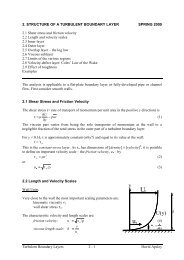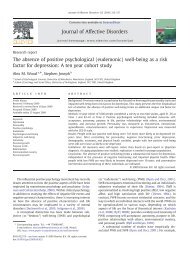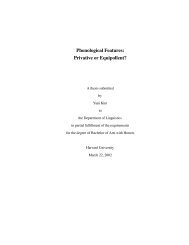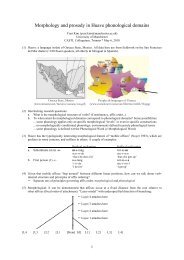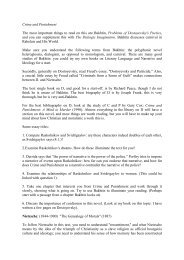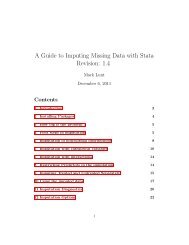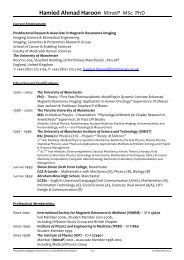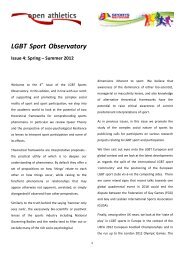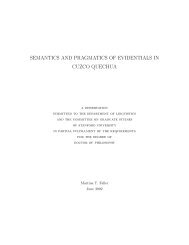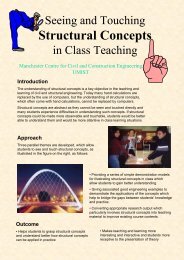You also want an ePaper? Increase the reach of your titles
YUMPU automatically turns print PDFs into web optimized ePapers that Google loves.
Viscous sublayer: y + < 5 – linear <strong>velocity</strong> profile<br />
Buffer layer: 5 < y + < 30<br />
Log law region: y + > 30, y/ < 0.3 – logarithmic <strong>velocity</strong> profile<br />
<strong>2.</strong>8 Velocity-Defect Layer: Coles’ Law of the Wake<br />
In the outer layer the <strong>velocity</strong> profile deviates slightly from the log law, particularly in nonequilibrium<br />
boundary layers with a pressure gradient. Coles (1956) noted that the deviation or<br />
excess <strong>velocity</strong> above the log law had a wake-like shape relative to the free stream; i.e.<br />
y<br />
U = U + U f ( )<br />
log law<br />
where f is some S-shaped function with f(0) = 0, f(1) = 1; popular forms are<br />
f (<br />
2<br />
) = sin<br />
2<br />
f ( ) = 3<br />
2<br />
− 2<br />
3<br />
Then we have the Coles Law of the Wake:<br />
U<br />
u<br />
1 +<br />
= ln y<br />
2<br />
+ B + f ( y/<br />
)<br />
where the deviation from the log law is quantified by the Coles wake parameter .<br />
Typical values are:<br />
pipe flow or channel flow: = 0<br />
zero-pressure-gradient flat-plate boundary layer: = 0.45<br />
In general, is a function of pressure gradient.<br />
<strong>2.</strong>9 Effect of Roughness<br />
The seminal experimental work was done by Prandtl’s PhD student Johann Nikuradse, who<br />
measured the friction factor in pipes artificially roughened with densely-packed sand grains<br />
of size ks. The relative roughness ks/D varied from 1/30 to 1/1000.<br />
+<br />
The influence of wall roughness is characterised by k = u k /<br />
+<br />
Hydraulically Smooth: ( k s < 5 ; i.e. less than the viscous sublayer depth)<br />
In this regime roughness has no effect on the friction factor or mean-<strong>velocity</strong> profile.<br />
+<br />
Fully Rough: ( k s > 70 )<br />
Transfer of momentum to the wall is predominantly by pressure drag on roughness elements,<br />
not viscous stresses, and wall friction becomes essentially independent of Reynolds number<br />
for sufficiently large Re. Dimensional analysis implies<br />
+ 1 y<br />
U = ln + Bk<br />
k<br />
From experimental data, Bk ≈ 8.5.<br />
s<br />
Turbulent Boundary Layers 2 - 5 David Apsley<br />
s<br />
¡s<br />
.<br />
(15)





